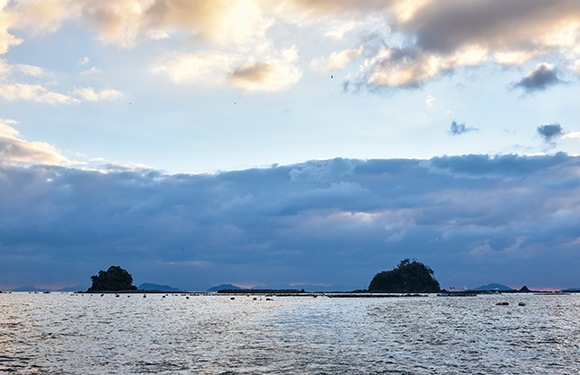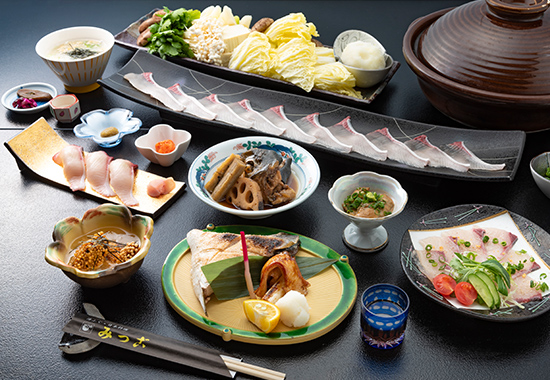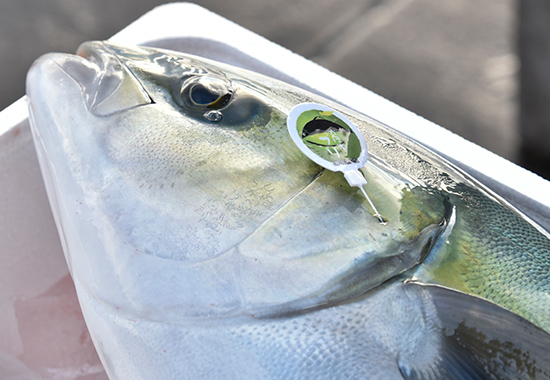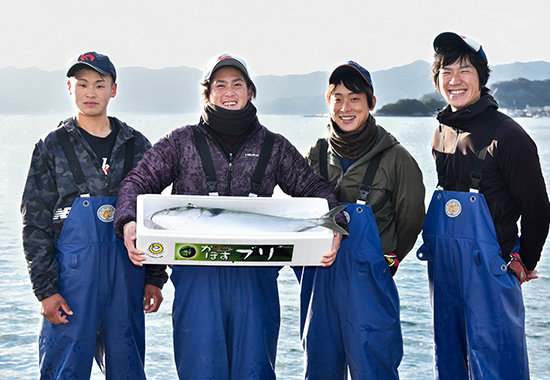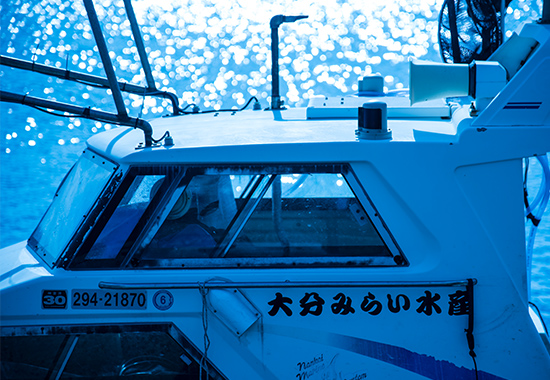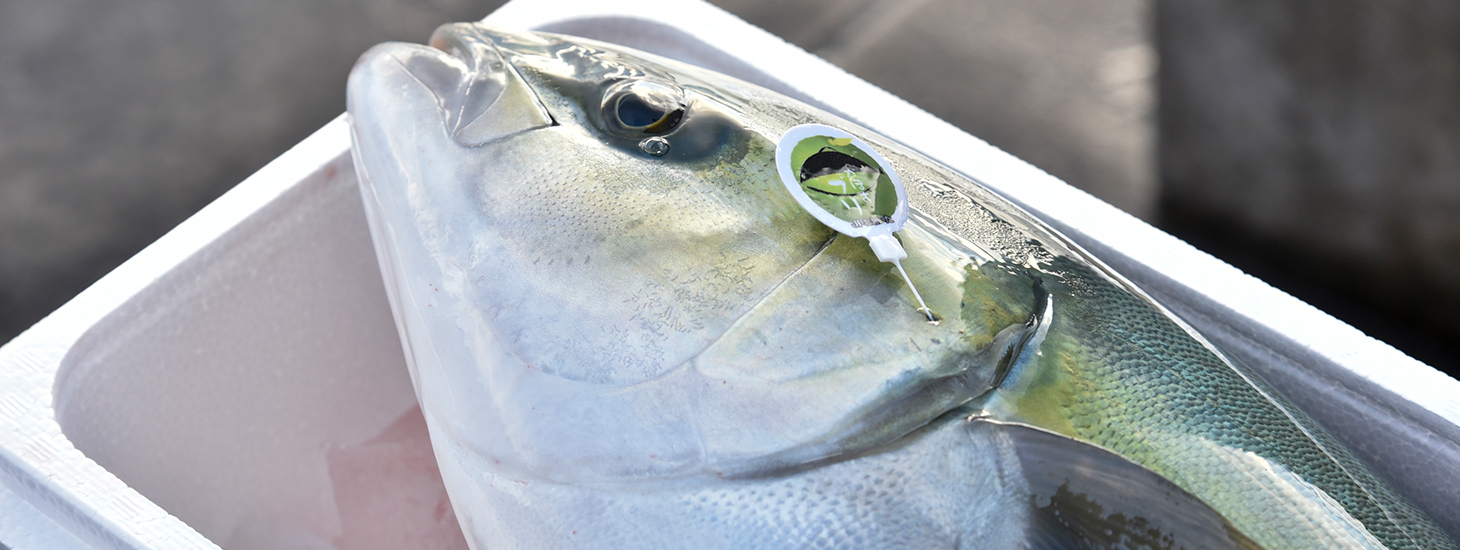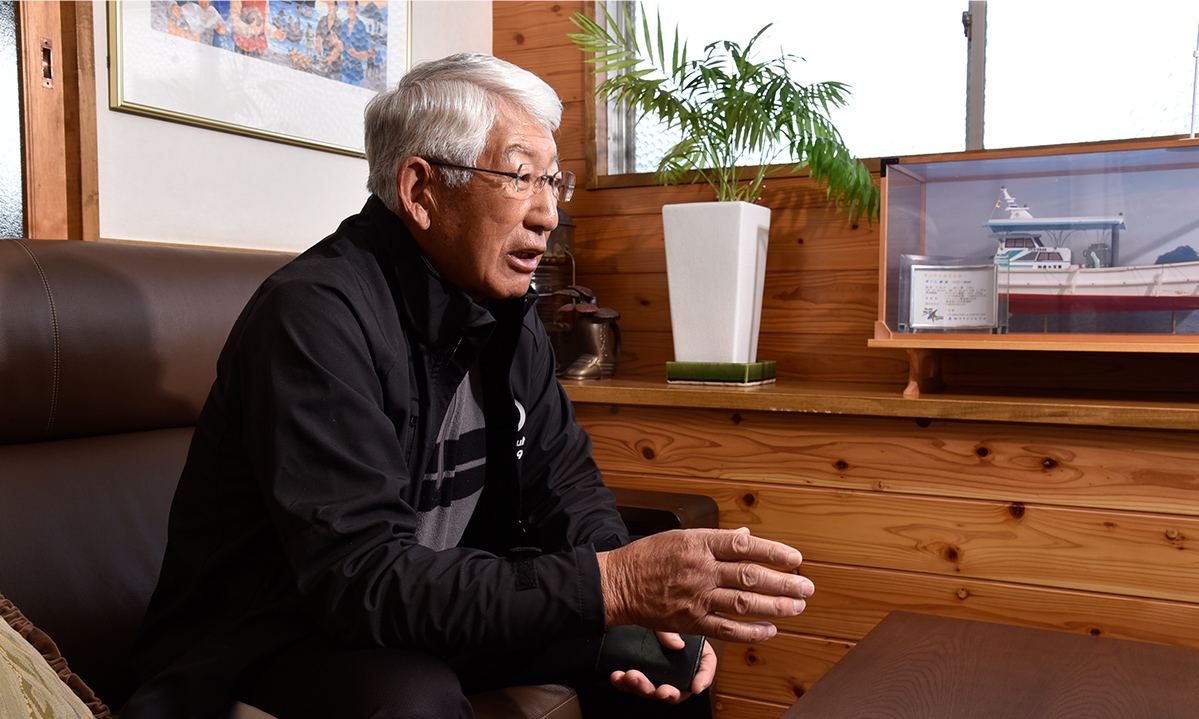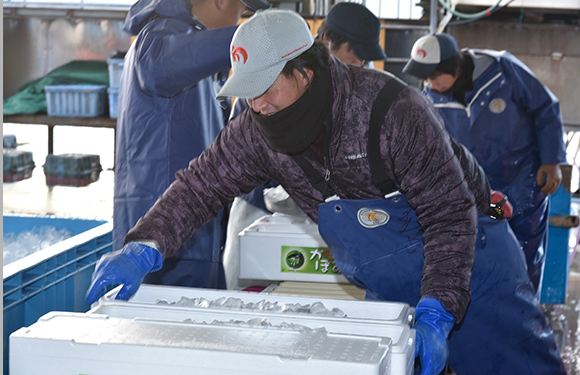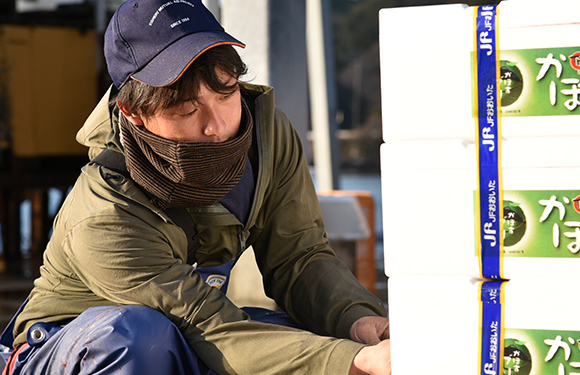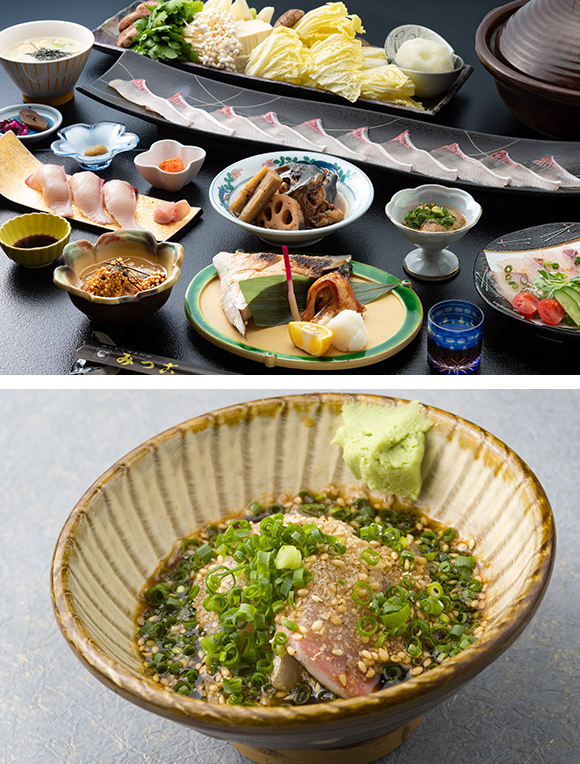
The surprise when I tasted Kabosu-buri gave me new strength. Together with Oita Prefecture, we promoted the product across the country, including Tokyo, Osaka, Kyoto, and Nagoya.
I even engaged a customer who said, "I don't like farm-raised yellowtail," and asked them to sample it. I was so happy when they praised our product with a smile, saying, “It’s delicious. This yellowtail is different."
I even asked a traditional Japanese restaurant I knew to develop some Kabosu-buri courses.
The dishes include carpaccio featuring the bright color of the dark meat, Ryukyu*, an Oita specialty, Kirasu-mamashi*, the classic Buri Daikon (yellowtail cooked with daikon), Nambayaki wrapped with green onion and grilled with sauce, deep-fried yellowtail with ankake sauce, and yellowtail shabu-shabu.
Since Kabosu-buri has a thin skin, we recommend enjoying yellowtail shabu-shabu with the skin on, as it is bursting with umami.
The final dish is zosui or rice porridge. Although bluefish such as yellowtail is not suitable for zosui because of its fishy smell, Kabosu-buri is also tasty in zosui.
When I eat it at home, I like to have it as a yellowtail shabu-shabu and make zosui the next day.
A simple recipe of making a broth with local white dashi and eating it with ponzu is delicious enough, so I highly recommend giving it a try.
-
Ryukyu* -
Sashimi of yellowtail marinated in sauce with toasted sesame seeds and other seasonings.
-
Kirasu-mameshi* -
Sashimi mixed with soy pulp. The local word “kirasu” stands for okara (soy pulp) and “mameshi” means to dredge.
